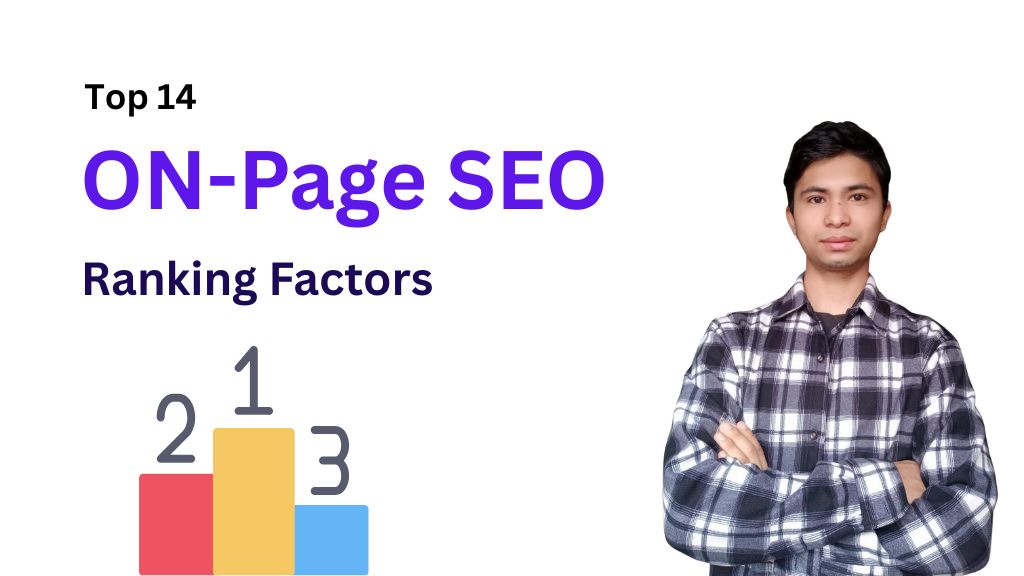In this guide, you’ll learn all the key aspects of technical SEO, explained in beginner-friendly language.
Here’s what we’ll cover:
- Crawlability and indexability
- Website architecture and URL structure
- XML sitemaps and robots.txt
- Page speed and Core Web Vitals
- Mobile-friendliness and responsive design
- HTTPS and website security
- Canonical tags and duplicate content
- Structured data and schema markup
- Internal linking and site hierarchy
- Technical SEO tools and audits
By the end, you’ll clearly understand how to make your website technically strong so it ranks better on Google.
What is Technical SEO?
Technical SEO is the practice of optimizing a website’s technical aspects so that search engines can crawl, index, and understand it more easily.
It involves tasks like improving page speed, setting up XML sitemaps and robots.txt files, organizing your site’s architecture, implementing HTTPS, and adding structured data.
Why is Technical SEO Important?
Google and other search engines aim to give users the best possible experience. That means they prioritize sites that load quickly, are mobile-friendly, and secure.

If your site doesn’t meet these standards, search engines may assume it won’t provide a good user experience. The result? Lower rankings and less traffic.
In practice, here’s why technical SEO is important:
Accessibility: If search bots can’t reach or render your pages (due to broken links, crawl blocks, or other errors), they can’t index your content. Unindexed pages won’t appear in search results at all.
User Experience: Fast, mobile-friendly, and secure sites keep visitors happy. Google has confirmed that page speed and mobile usability are ranking factors. Slow or poorly formatted sites frustrate users, increasing bounce rates (people leaving quickly), which can also hurt your rankings.
Business Impact: Lower search visibility means less traffic and potentially fewer customers. Technical SEO issues can “make or break your SEO performance” by cutting off valuable search traffic.
Therefore, to improve all these things, technical SEO is important.
Key Elements of Technical SEO
Below are the main areas to focus on for technical SEO. Each section includes simple explanations and tips to improve that aspect of your site.
1. Site Architecture and Internal Linking

Your site architecture (or structure) is how pages on your website are linked together. A clear, logical structure helps both users and search engines navigate your site easily.
For example, all important pages should be reachable within a few clicks from the homepage.
Organize content into categories and subpages in a hierarchy (see bullet list below). This not only improves user navigation but also ensures search bots can find all your pages.
Good architecture also avoids “orphan” pages (pages with no links pointing to them, which are hard for crawlers to discover).
Logical hierarchy: Use categories and subcategories. For example: Home → Category page → Product or article pages.
Matching URLs: Keep URL paths organized (e.g., blogs/on-page-seo-for-beginners, blogs/content-writing-for-beginners). Internal links: Link related pages together. A blog post should link to other relevant posts or category pages.
Breadcrumbs: Show page location (Home > Section > Page) so users and bots can retrace navigation.
A well-structured site helps search engines pass “link juice” to deeper pages, making sure all pages get crawled and valued. It also “provides context on the importance of different URLs”, so organizing your content with clear internal linking is a key SEO tactic.
2. XML Sitemaps and Robots.txt
XML Sitemap: An XML sitemap is like a roadmap of your site – a file (usually at sumanstha.com/sitemap.xml) that lists your most important pages.

Submitting an XML sitemap to Google via Search Console tells Google where to find all your key URLs. This is especially useful for large or newly launched sites, ensuring no page is missed.
Make sure your sitemap updates whenever you add new pages. In Google Search Console, go to Index > Sitemaps, enter your sitemap URL, and submit it.

Robots.txt: This is a simple text file at your site’s root (e.g., sumanstha.com/robots.txt) that tells search engine crawlers which parts of your site they can or can’t visit.

For instance, you might want bots to ignore shopping cart pages or private directories. The key point: robots.txt manages crawl traffic; it does not block a page from being found in search.
In other words, you shouldn’t use robots.txt to try to hide sensitive content – for that, use password protection or meta noindex tags. Instead, use robots.txt carefully to prevent your server from being overloaded by bots and to avoid crawling duplicate or irrelevant URLs.
Optimize These Files:
Ensure your sitemap only lists canonical URLs (no broken links).
Update the sitemap or resubmit when you add or change content.
In robots.txt, disallow only truly irrelevant or sensitive paths; don’t accidentally block entire sections of your site. A misplaced tag
Disallow: /could hide your entire site from Google. If you’re unsure, keep robots.txt simple or seek expert help.
3. Crawling and Indexing

Crawling: This is when search engines send bots (like Googlebot) to follow links and discover pages. For example, if your homepage links to all your latest blog posts, crawling your homepage lets Google find those new posts. To optimize crawling:
Check for crawl errors: Use tools (like Google Search Console) to spot 404s, server errors, or blocked pages.
Improve internal links: Ensure every page is accessible via links from other pages on your site.
Monitor crawl budget: On huge sites, Google can only crawl so much per day. Avoid unnecessary crawling of duplicate pages or admin pages.
Indexing: After crawling, search engines index pages – that is, they store information about the content to later show in search results. If a page isn’t indexed, it can’t appear in search results.

To ensure indexing:
Use noindex selectively: Only tag pages “noindex” if you really want them excluded (e.g., private thank-you pages). Avoid placing noindex on important pages.
Use canonical tags: If you have multiple pages with similar content (e.g.,
yoursite.com/pageandyoursite.com/page?ref=123), use a canonical tag (<link rel="canonical">) to tell Google which version is the main one. This prevents confusion and splits ranking signals.Monitor indexed pages: In Google Search Console, the Coverage report shows which URLs are indexed and which have issues.
You can also do a quick check with Google’s “site:” search (e.g.,site:sumanstha.com) to see how many pages Google finds.

4. Site Speed and Performance
Page speed is a confirmed ranking factor for both desktop and mobile search. Fast pages improve user satisfaction (people stay and convert) and help search bots crawl more pages quickly. Aim for pages that load in under 2 seconds. A slow site can lead to users bouncing (leaving) and may limit how much of your site Google can crawl.

To improve speed, consider:
Optimize images: Compress large images, use next-gen formats (like WebP), and set appropriate dimensions so browsers load them efficiently.
Minify resources: Remove extra spaces/comments in HTML, CSS, and JavaScript. Combine or defer scripts and CSS where possible.
Enable browser caching: This lets repeat visitors load your pages faster by reusing files.
Use a Content Delivery Network (CDN): CDNs store copies of your site on servers around the world, reducing latency for distant visitors.
Monitor Core Web Vitals: Google’s Core Web Vitals are a set of metrics measuring loading speed, interactivity, and layout stability. Key targets include LCP (Largest Contentful Paint) under 2.5 seconds, INP (Interaction to Next Paint) under 200ms, and CLS (Cumulative Layout Shift) under 0.1. Tools like Google’s PageSpeed Insights can highlight issues.
In short, make sure your site is as lean and efficient as possible. This not only helps SEO but also keeps visitors happy.
5. Mobile-Friendliness and Responsive Design

With the rise of smartphones, Google now uses mobile-first indexing: it predominantly looks at the mobile version of your site when crawling and ranking.
That means your site must work well on phones and tablets. If your site is hard to use on mobile, Google may rank it lower or even fail to index important pages.
Key tips for mobile optimization:
Responsive Design: Ensure your site automatically adjusts to different screen sizes. A responsive theme or template will do this. All menus, buttons, and links should be easy to tap on a small screen.
Mobile-Friendly Test: Use Google’s free Mobile-Friendly Test tool to check pages. It flags issues like text being too small or touch elements being too close.
Avoid mobile-only blocks: Don’t hide important content in the mobile version. Make sure the text, images, and videos accessible on desktop are also on mobile.
Page Speed on Mobile: Mobile connections can be slower. Use the same speed optimization tips (caching, compression) especially carefully for mobile.
In short, if a desktop site exists, its mobile version should have the same content and be fully functional. Google’s tools and latest guidance make it clear: “site owners should aim for good Core Web Vitals for success with Search” and ensure “content displays well for mobile devices”.
6. Website Security (HTTPS)

Website security is another ranking consideration. Google has stated that HTTPS is a ranking signal. All sites should use HTTPS (with an SSL/TLS certificate) to encrypt data between users and your server. HTTPS protects users’ information and builds trust (look for the padlock icon in browsers). In practice:
Install an SSL Certificate: Many hosting providers include free SSL certificates (e.g., via Let’s Encrypt). Once installed, ensure your site always redirects to the
https://version.Update internal links: Make sure all internal URLs, images, and resources use HTTPS.
Check for mixed content: After moving to HTTPS, fix any “mixed content” warnings (secure page loading some insecure elements).
Google emphasizes that while HTTPS alone isn’t the sole factor in rankings, it’s part of the overall page experience. A secure site may gain a slight ranking boost and definitely avoids “Not Secure” warnings in users’ browsers.
7. Structured Data (Schema Markup)

Structured data (often implemented with [Schema.org] tags) is code you add to your pages to give search engines explicit clues about what’s on the page. For example, on a recipe page, you might mark up ingredients, cooking time, and calories. This helps Google create rich snippets or other enhanced results (like recipe cards, FAQs, reviews) in search. These rich results are more eye-catching and can increase click-through rates. For instance, pages showing as rich results have been shown to get far higher clicks.
To use structured data:
Identify opportunities: Use Google’s [Structured Data Markup Helper] or refer to schema.org for your content type (Articles, Products, Events, FAQs, etc.).
Add JSON-LD: The easiest way is to add JSON-LD formatted schema in your page’s HTML (Google prefers this format). For example, add
<script type="application/ld+json">{...}</script>with your page’s info.Test your markup: Google’s Rich Results Test can check if your structured data is valid and eligible for enhancement.
Monitor in Search Console: The Rich Results report in Search Console shows any errors with your markup and how many pages generate valid rich results.
Even if you start with a simple markup (like an article’s title and author), structured data can give Google a better understanding of your content. For beginners, adding basic schema (like Organization or Breadcrumbs) is a great first step.
8. Accessibility and Other Considerations

While not always labeled “technical SEO,” accessibility overlaps heavily. Making your site accessible (with descriptive alt text on images, clear headings, and good color contrast) improves user experience and can indirectly help SEO. For example, Google can’t see images but can read alt text, so providing alt text on images both helps visually impaired users and lets Google understand image content. In technical terms:
Alt Text: Always add a short, descriptive
altattribute to images. This is indexed by Google Images and provides content context.Headers and Labels: Use
<h1>,<h2>, etc., appropriately. Clear structure helps bots parse content, and it helps readers scan your page.Avoid Hidden Content: Google advises against showing different content to users vs. bots. So don’t hide text in tabs or pop-ups if possible. If you use tabs, ensure important content is crawlable.
URL Structure: Keep URLs simple and readable (e.g.,
/blog/technical-seo-guiderather than/index.php?id=123). Clean URLs can help with ranking and user trust.
Additionally, watch out for broken links (404 errors) and fix them. Broken links hurt user experience and waste crawl budget. Tools like Screaming Frog or site audit tools can find 404s and redirect issues. Finally, avoid duplicate content: use 301 redirects or canonical tags to combine similar pages.
Technical SEO Tools and Audits

Monitoring your site’s technical health is important. Several free tools can help:
Google Search Console (GSC): Vital for any site. GSC shows crawl errors, indexing status, mobile usability issues, Core Web Vitals, security issues (like manual actions), and more. It’s often the first place to check after making changes.
Bing Webmaster Tools: Similar to GSC, it provides crawl diagnostics and indexing info for Bing (and also works for Google insights).
Screaming Frog SEO Spider: A desktop tool that crawls your site like a search bot and reports issues (broken links, missing tags, duplicate content, etc.). The free version can crawl up to 500 URLs.
PageSpeed Insights / Lighthouse: Google’s tools for checking page performance and Core Web Vitals. They suggest specific fixes for speed and UX issues.
SSL Checkers: If you moved to HTTPS, use a tool to ensure your certificate is valid on all pages.
Robots.txt Tester: Google Search Console has a tester for your robots.txt file to see if it’s blocking important pages.
By regularly auditing with these tools, you can catch and fix technical issues early. For beginners, scheduling a simple audit every few months helps maintain good technical SEO.
Technical SEO Checklist
Here’s a handy checklist summarizing the key tasks to keep your technical SEO in top shape:
Use HTTPS: Install an SSL certificate and ensure every page loads on
https://.Optimize Page Speed: Aim for <2s load time. Compress images, minify code, leverage caching, and follow Core Web Vitals targets.
Ensure Mobile-Friendliness: Use a responsive design. Test with Google’s Mobile-Friendly Tool.
Create an XML Sitemap: List all important URLs and submit it to Google Search Console.
Configure robots.txt: Allow crawlers to access your site while blocking unimportant or sensitive directories.
Set Canonical URLs: Use
rel="canonical"for duplicate or similar pages to avoid confusion.Fix Crawl Errors: Regularly check Search Console for 404s, 5xx errors, or redirect loops and fix them.
Add Structured Data: Implement schema markup for articles, products, FAQs, etc., and test in Search Console.
Maintain Site Structure: Keep URLs clean and hierarchical. Use breadcrumbs and clear navigation links.
Add Alt Text: Provide descriptive alt attributes for all images for accessibility and SEO.
Audit Regularly: Use tools like Search Console, Screaming Frog, and PageSpeed Insights to find and fix issues.
Following this checklist will help ensure your website meets search engines’ technical requirements. Each item on the list directly impacts how easily Google can crawl and rank your site.
Conclusion
Technical SEO may seem complex, but at its core, it’s about making your website work well for both users and search engines. By focusing on site speed, mobile usability, security, crawlability, and clean structure, even beginners can greatly improve their site’s search visibility.
Remember: no matter how great your content, technical issues can block it from being found. Use the tips and checklist above to build a solid technical foundation.
Over time, this will help your site rank higher, attract more traffic, and provide a better experience for everyone. Good technical SEO is a crucial first step on your journey to getting found in search.
Common Questions about Technical SEO
Here are some commonly asked questions related to technical SEO:
1. How is technical SEO different from on-page SEO?
On-page SEO focuses on content elements like keywords, titles, and headings. Technical SEO, on the other hand, deals with speed, structure, security, and crawlability.
2. Do I need coding knowledge for technical SEO?
Not always. Basic technical SEO tasks like fixing broken links, submitting sitemaps, or improving site speed can be done without coding. However, advanced issues may require developer support.
3. What tools can I use for technical SEO?
Popular tools include Google Search Console, Screaming Frog, Ahrefs, SEMrush, and PageSpeed Insights. These help you identify and fix issues quickly.
4. How often should I do a technical SEO audit?
It’s best to run a full technical SEO audit every 3–6 months. For large or frequently updated sites, monthly audits are recommended.
6. Can technical SEO alone improve my rankings?
You can’t. Technical SEO builds a strong foundation by making your website accessible and user-friendly for search engines. But to rank higher, you also need quality content and backlinks along with solid technical SEO.
If you found this guide helpful, please share this article on Social Media.



